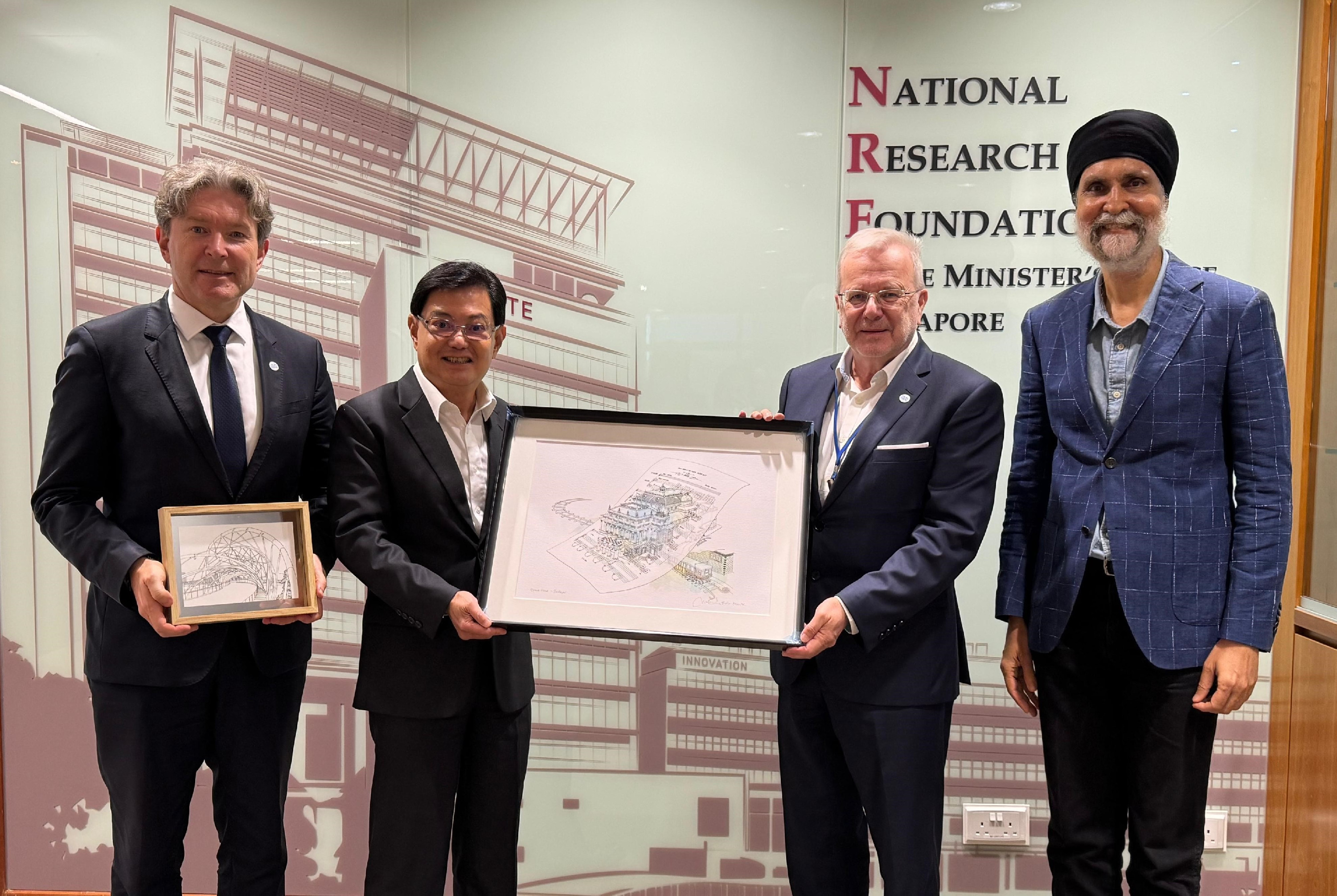AI Symposium 2025 – Highlights from Day Two
Nobel Laureate speaks at the Várkert Bazár
Greater emphasis must be placed on AI education for both individuals and businesses to better adapt to emerging technologies—this was a key takeaway from the second day of HUN-REN’s major AI event. Nobel Laureate Sir Konstantin Novoselov traced the evolution of materials science from the discovery of graphene to the challenges of designing next-generation materials, while also exploring the unique interplay between materials science and artificial intelligence.
The second day of AI Symposium 2025 began with an engaging panel discussion on strategic funding and sustainable growth, featuring László Palkovics, Government Commissioner for Artificial Intelligence; Roland Jakab, CEO of HUN-REN; and Viktor Vajda, Deputy CEO of the Neumann Technology Platform. The session was moderated by Gergely Szertics, Head of HUN-REN’s AI 4 Science Programme.
László Palkovics reflected on Hungary’s national AI strategy, launched in 2020, outlining its strengths while also pointing to areas that still require development, such as the data-driven economy and education. He highlighted the need to update the strategy in light of rapid technological change and alignment with EU regulations. “One of the most important elements of the strategy,” he stressed, “is that artificial intelligence must be made accessible and usable for communities, individuals, businesses, institutions and public administration.”
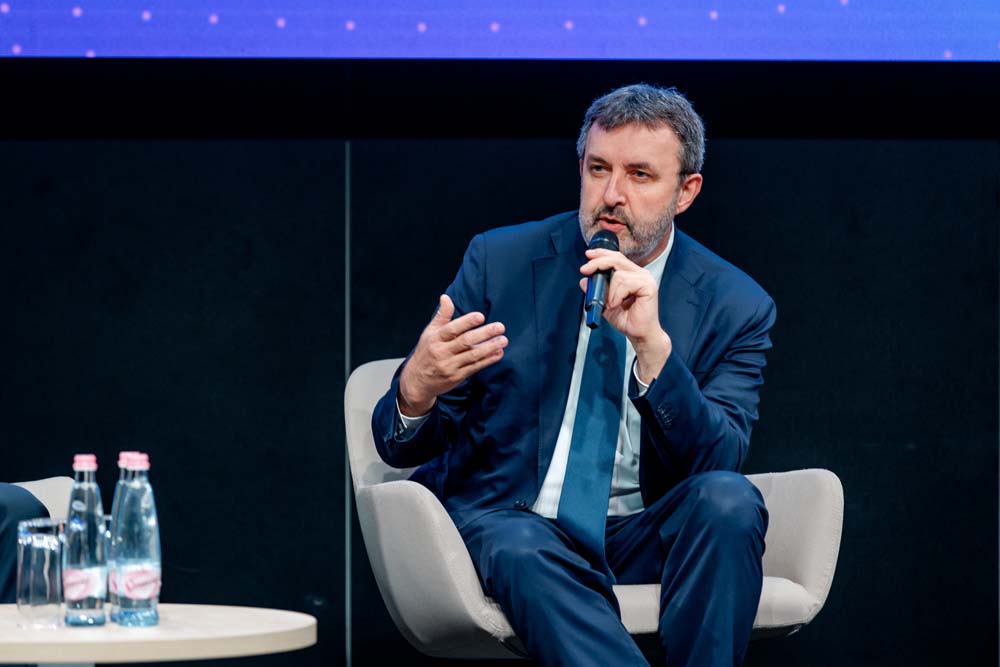
László Palkovics
Photo: DKP Visual Kft.
Roland Jakab, CEO of HUN-REN, echoed this view, stating that Hungary aims to take a leading role in the age of artificial intelligence by being among the first to implement the EU AI Act effectively. “This would allow us to create a safe, transparent and future-proof environment for the development and application of AI,” the CEO emphasised.
Dr Viktor Vajda, Deputy CEO of the Neumann Technology Platform (John von Neumann Ltd), also confirmed that Hungary is preparing to take a leading and proactive role in the implementation of the EU AI Act. He explained that the goal is to create a clear and legally stable environment that promotes the adoption of AI while protecting users. In doing so, Hungary can demonstrate its commitment and forward-thinking approach by becoming "the best-performing pupil", Dr Vajda emphasised.
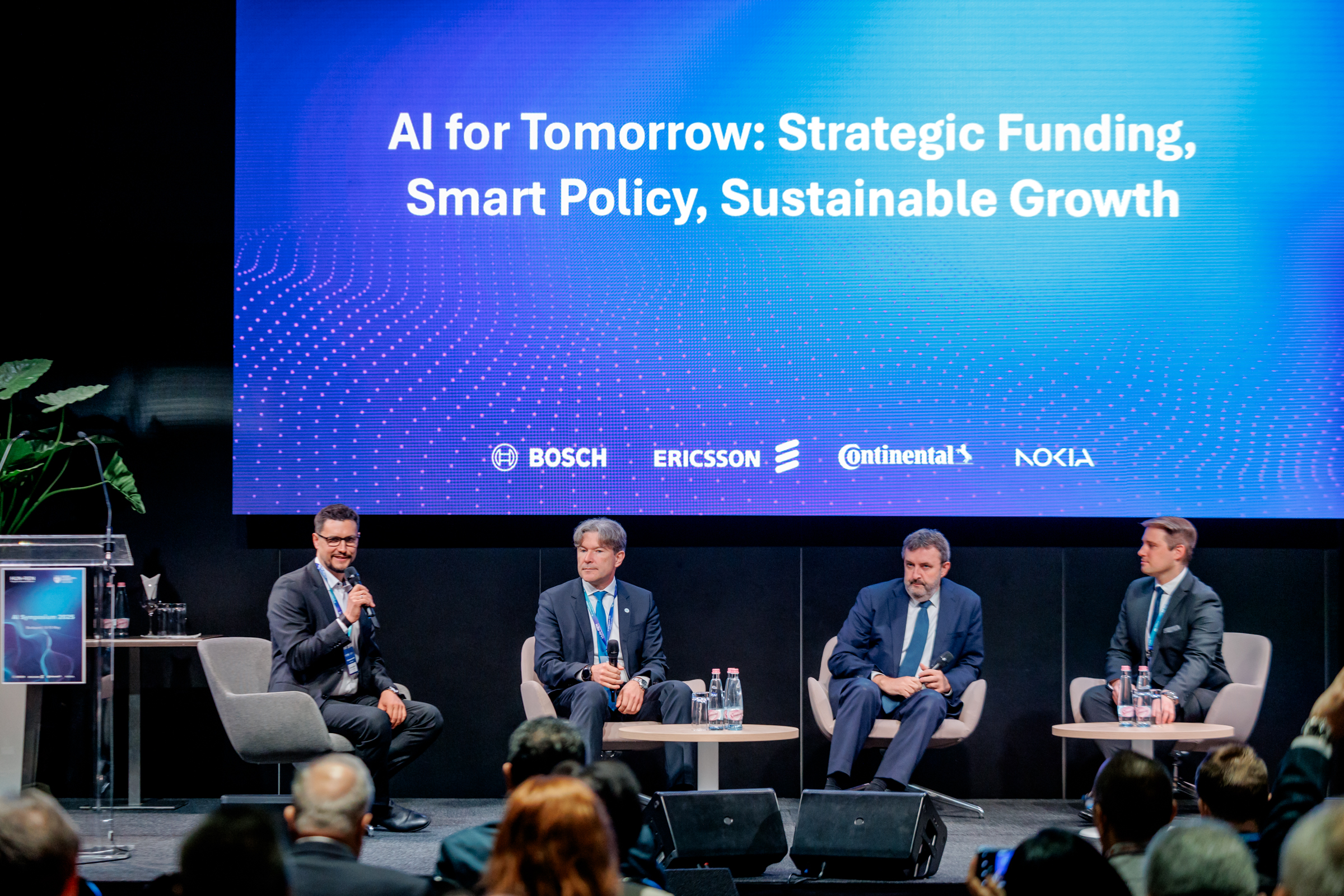
Photo: DKP Visual Kft.
The discussion also highlighted that the effective practical application of AI in the Hungarian economy will only be possible through broad-based cooperation—bringing together small and medium-sized enterprises, chambers of commerce, universities, and international partners. It was emphasised that Hungary now has a real opportunity to gain a strategic advantage in this area.
Roland Jakab emphasised that Hungary aims to become a hub for artificial intelligence by connecting supercomputing resources with SMEs, researchers and universities through the AI Factory programme—laying the groundwork for long-term economic and scientific development. “The overarching goal is to create an ecosystem in which academia, businesses, research institutes, start-ups and ideas are all present and interconnected,” the HUN-REN CEO highlighted.
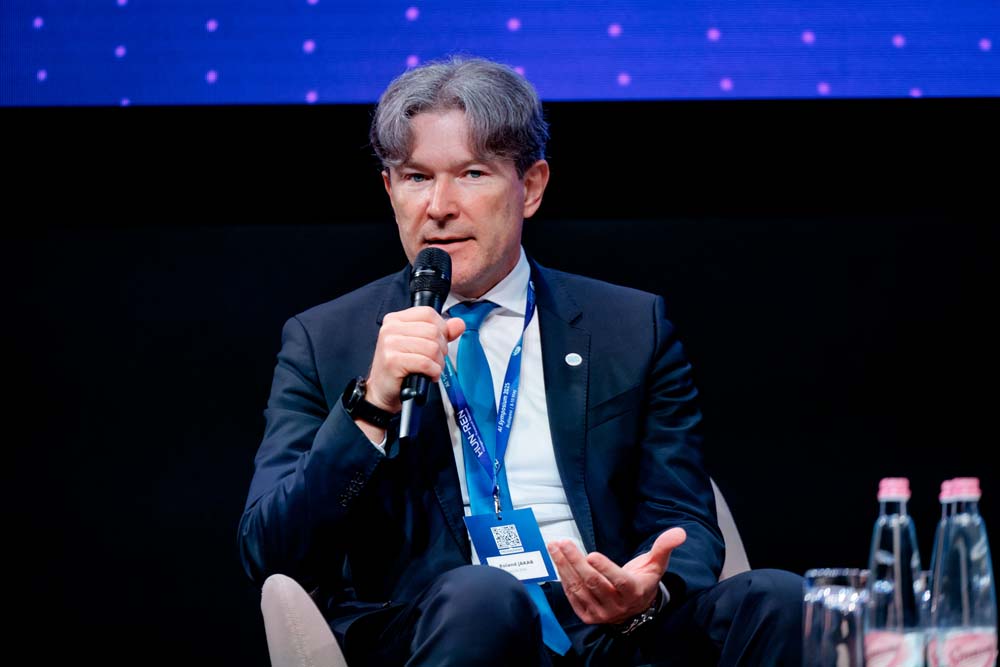
Roland Jakab
Photo: DKP Visual Kft.
Roland Jakab added that the HUNRENTECH Technology Transfer Call aims to support HUN-REN researchers in transforming their inventions and scientific results into products—taking into account the entire value chain. The new initiative will focus on fields such as materials science, energy and agriculture. “In addition, training programmes will be launched to help researchers make use of computational capacity and create social and economic value from their work,” he added.
The first plenary lecture was delivered by Professor Stefan Thurner, Head of the Complexity Science Hub Vienna and researcher at the Medical University of Vienna. He noted that today’s technology finally allows us to “see” and understand the hidden networks of the economy. The dynamics of supply chains are no longer merely a logistical issue—they are key to gaining deeper insight into how the economic system functions, including its risks and opportunities. Data-driven network science and artificial intelligence, he argued, offer an opportunity to take economics to a new level. “Companies are the atoms of the economy—and I mean that quite literally. The only difference is that these atoms are far more complex than real ones,” the Austrian physicist emphasised.
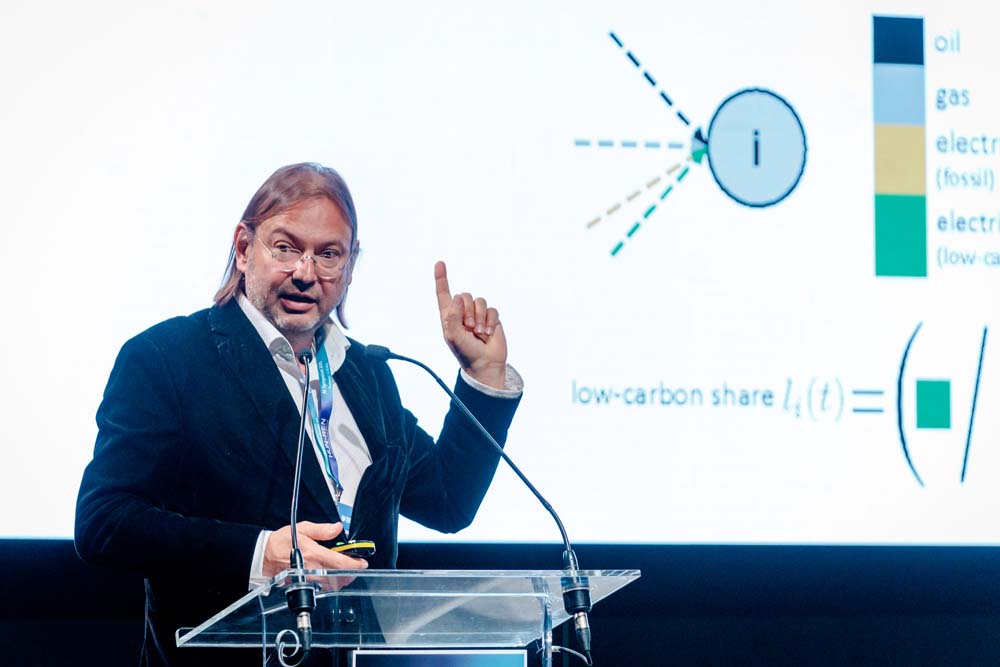
Stefan Thurner
Photo: DKP Visual Kft.
The star speaker of the day was Professor Sir Konstantin Novoselov, the youngest-ever Nobel Laureate, who presented the evolution of materials science—from the discovery of graphene to the challenges involved in designing the next generation of materials. His lecture made it clear that traditional approaches are no longer sufficient for dealing with complex systems such as two-dimensional materials, heterostructures, and quantum devices. As materials become increasingly complex and we approach the limits of computational capacity, AI is becoming an indispensable tool—not to replace researchers, but to support the understanding, design and optimisation of materials.
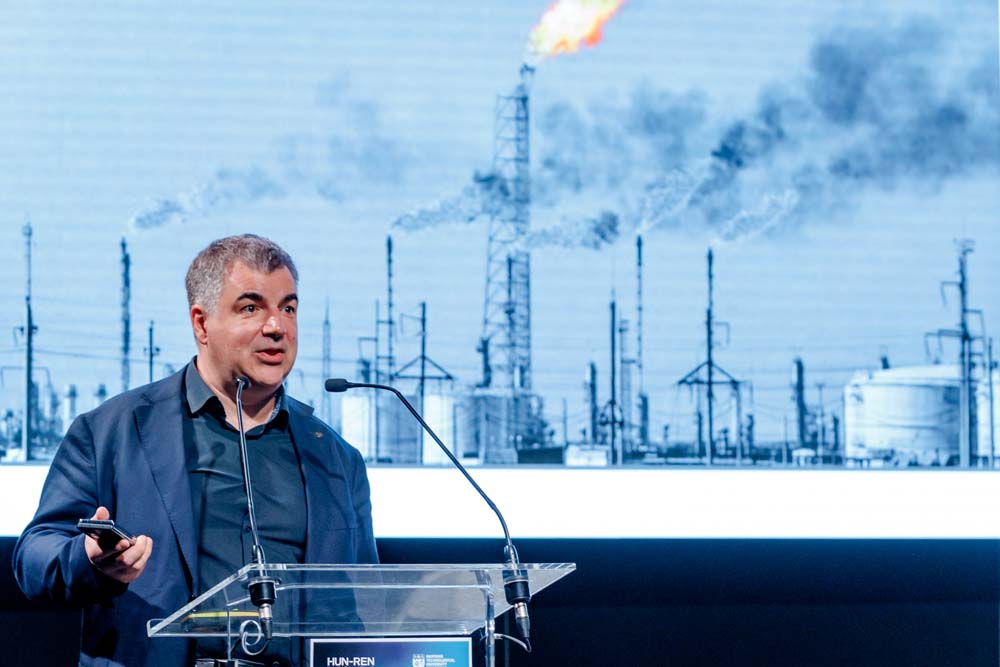
Sir Konstantin Novoselov
Photo: DKP Visual Kft.
“We’ve realised that traditional methods in materials design no longer work. We truly need to think outside the established frameworks,” the Nobel Laureate told the symposium audience. He also held separate meetings with Balázs Gulyás, President of HUN-REN, and CEO Roland Jakab.
AI Symposium 2025 also provided a platform for the top three teams from the HUN-REN Disrupt Science AI Hackathon, held earlier in the week, to present their work. First place went to the AutoDiscover project, which set out to develop an agent-based AI system to solve scientific problems by recommending methodologies from distant disciplines—enabling research to be supported more creatively and effectively through artificial intelligence.
The runner-up team proposed creating a simulated population of AI children, constructed from language models, to support research into child behaviour. The third-place team developed and presented an AI-based system capable of automating aspects of social science research, including idea generation, narrative writing, experimental design and evaluation. Further details about the Hackathon are available here.
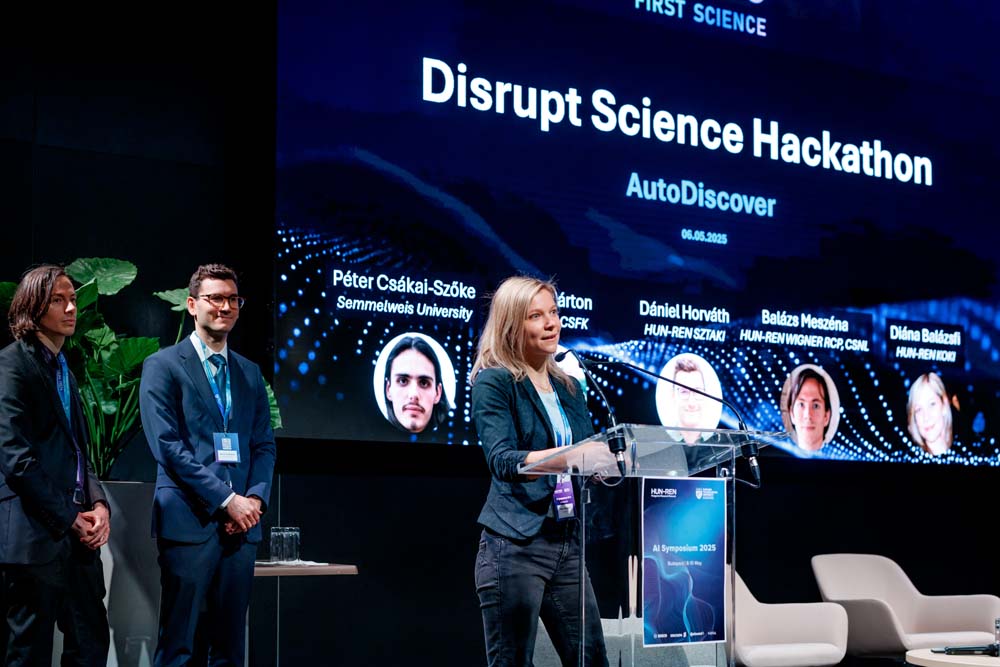
Photo: DKP Visual Kft.
Chen Change Loy, Deputy Director of the AI-for-X Centre at Nanyang Technological University (NTU), Singapore, presented his work on computer vision, particularly in the context of materials science and artificial intelligence. He explained that the goal of computer vision is to enable machines to perceive and understand the visual world in a manner similar to human perception. The field primarily focuses on automatically extracting, analysing and interpreting information from images and videos to support decision-making and interaction.

Chen Change Loy
Photo: DKP Visual Kft.
Among the topics discussed in the afternoon’s parallel sessions, alongside AI developments, was robotics programming. Csaba Beleznai, researcher at the Austrian Institute of Technology, offered insights into the behind-the-scenes workings of large-scale machinery operating autonomously according to pre-programmed instructions. Per Ola Kristensson, researcher at the University of Cambridge, used the example of handwriting and typing to illustrate how intelligent technologies and virtual reality are reshaping everyday interactions between humans and machines.
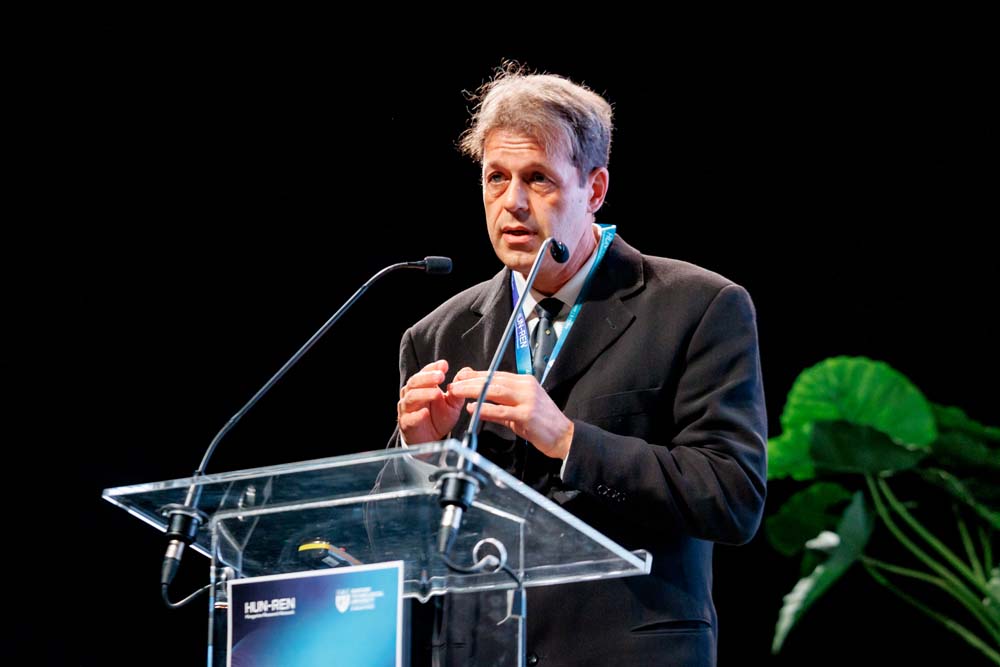
Csaba Beleznai
Photo: DKP Visual Kft.
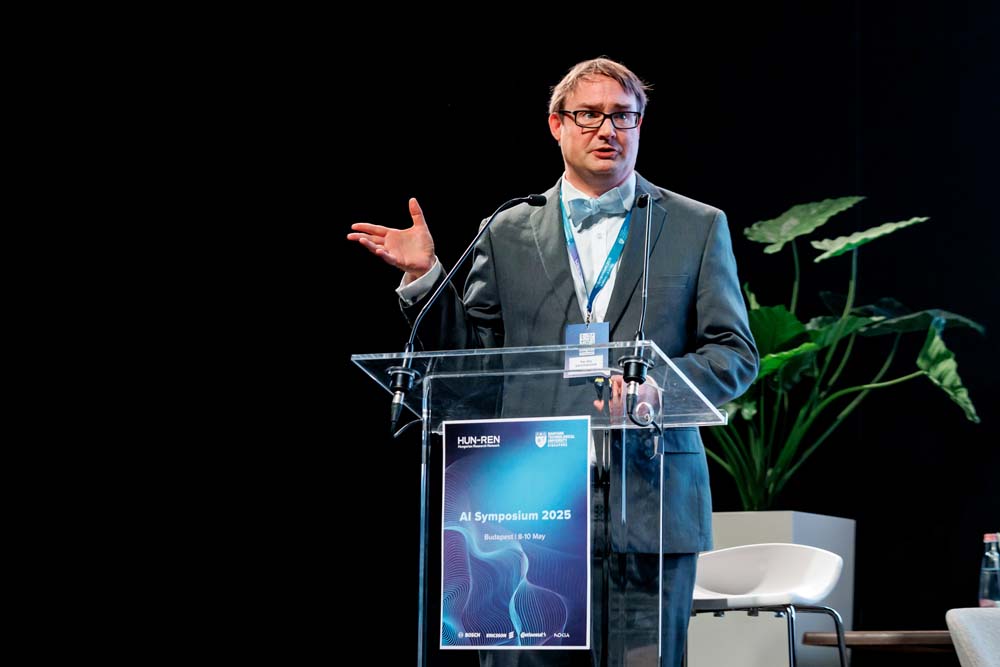
Per Ola Kristensson
Photo: DKP Visual Kft.
Experts invited to speak in the thematic sessions also highlighted the vital and inescapable role of network science. The speakers confirmed that, following advances in parallel processing and graph structure optimisation, AI systems are now able to “see” graphs in much the same way that language models interpret text. Balázs Szegedy, a researcher at the HUN-REN Alfréd Rényi Institute of Mathematics, spoke about the integration of Hungarian mathematical expertise into deep learning.
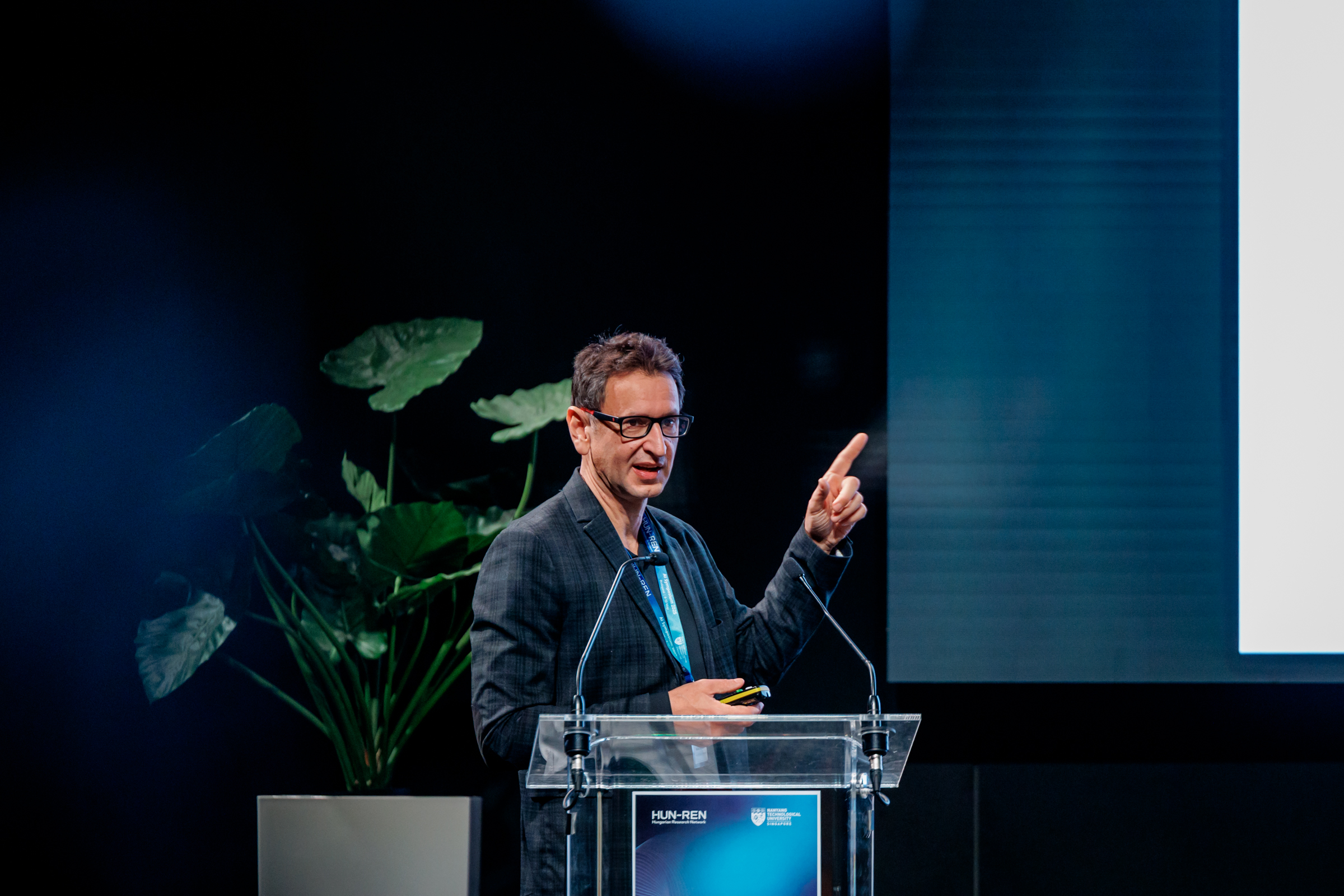
Balázs Szegedy
Photo: DKP Visual Kft.
In the session dedicated to uncertainty and safety in machine learning, Hungarian researchers working in national and international scientific institutions gave presentations and answered questions from the audience. György Ádám, Mihály Petreczky, Balázs Csáji and Márk Jelasity addressed fundamental questions in artificial intelligence, focusing in particular on the reliability of widely used large language models—such as ChatGPT—and the uncertainties surrounding their decision-making. Their talks also covered robust mathematical methods for estimating uncertainty, detecting errors, and the challenges and opportunities of provably reliable verification.
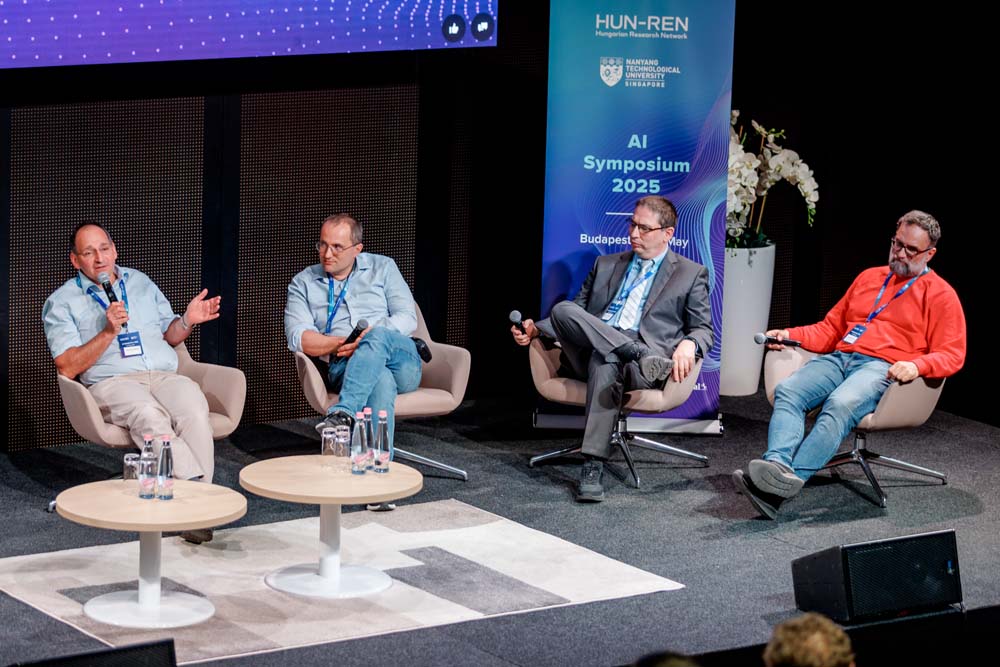
Photo: DKP Visual Kft.
Our summary of the first day is available here.
